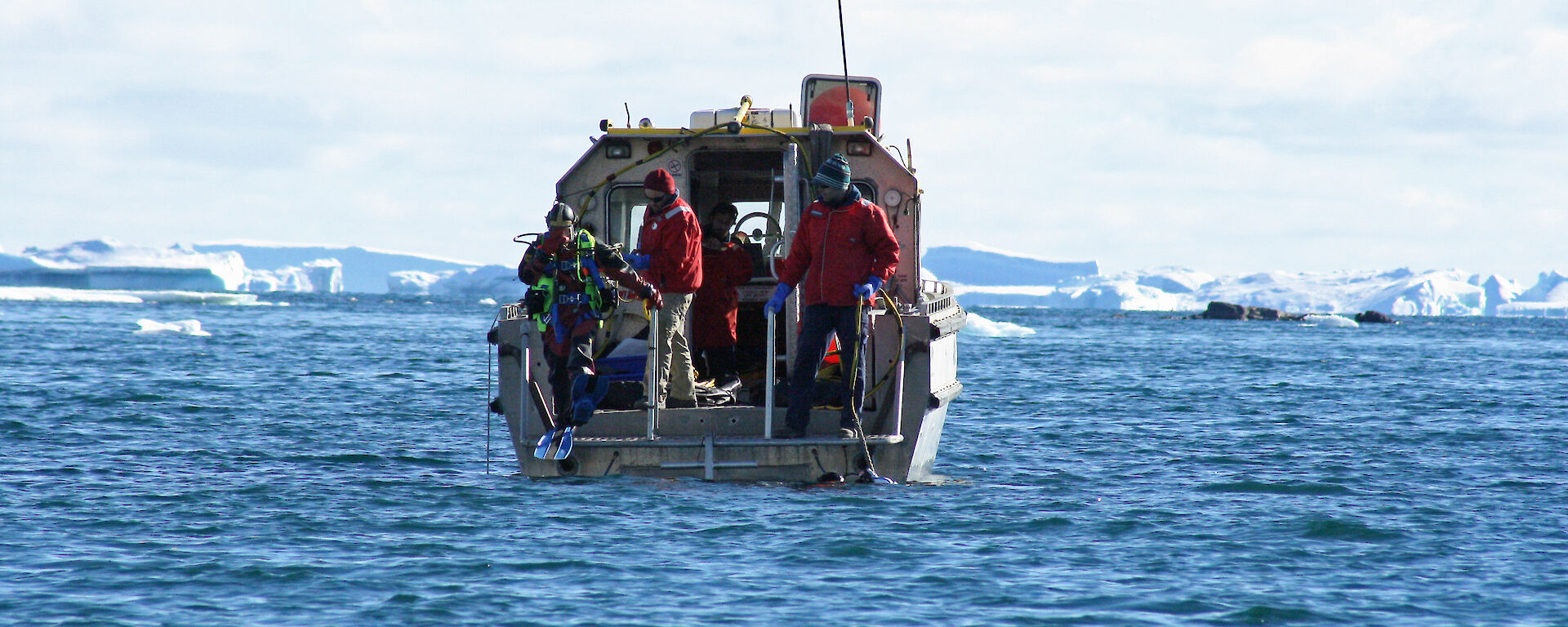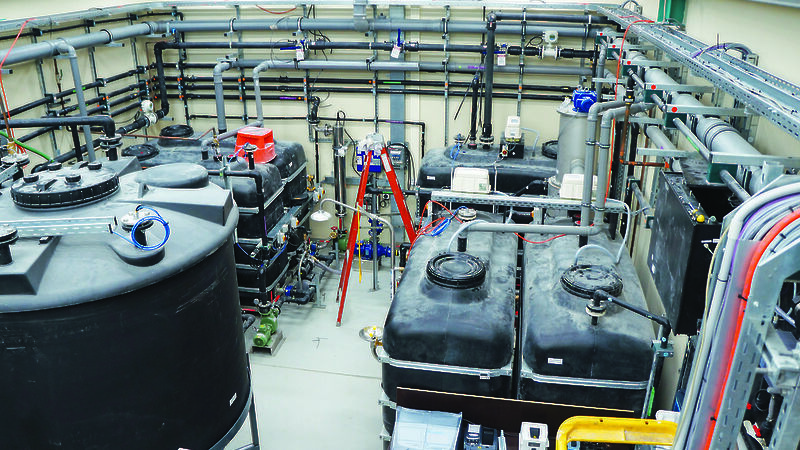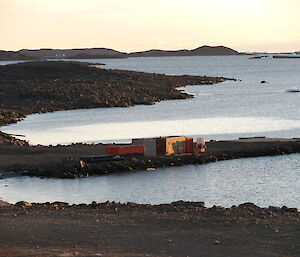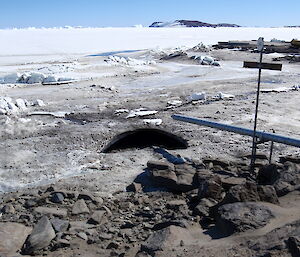An environmental impact assessment of the effect of sewage discharged from Davis research station on the marine environment, has resulted in an ambitious engineering project to upgrade wastewater treatment plants at Australia’s Antarctic stations.
The detailed environmental impact assessment, undertaken by the Australian Antarctic Division in 2009–10 (Australian Antarctic Magazine 19: 8–9, 2010), aimed to identify the level of sewage treatment needed to ensure that Australia meets its environmental responsibilities under national legislation and the Environmental Protocol to the Antarctic Treaty. These responsibilities require Australian stations to dispose of effluent “in a manner that does not adversely affect the local environment” and at a location that allows for “initial dilution and rapid dispersal”.
Between 2005 and 2015, after Davis station’s sewage treatment plant failed, effluent was macerated and discharged to the sea from a pipe near the station’s wharf — a practice permitted under the Environmental Protocol.
The environmental impact assessment showed that the effluent was poorly dispersed during the three-month period of the study, resulting in the accumulation of some contaminants in the environment and a range of adverse impacts. These impacts included accumulation of faecal contaminants, heavy metals and persistent organic pollutants in the sediments near the outfall, the transfer of antibiotic resistance genes from faecal bacteria to the local microbial population, differences in benthic communities around the outfall compared to reference sites, and the exposure of seals and penguins to high levels of faecal bacteria within 50m (and at times 500m) of the outfall pipe. These levels of exposure are considered unsafe for humans under Australian and New Zealand Environment and Conservation Council guidelines.
Quality and quantity
To deliver this assessment, the scientific team had to first determine the properties of the wastewater in the different septic tanks that contributed to the final outflow, and how the effluent was dispersing and diluting in the environment.
Project Leader, Dr Jonny Stark, said the effluent came from eight different buildings and varied depending on the building’s use and the number of occupants.
Contaminants in the tanks included metals such as copper, zinc, lead and mercury, surfactants (from soaps and shampoos), oils and other hydrocarbons, and polybrominated diphenyl ether (PDBE) compounds, which are used as flame retardants in clothes, plastics and building materials.
“By understanding what goes into the sewage outfall line, we can identify which treatments we need to deal with the contaminants,” Dr Stark said.
“For example, to remove nitrogen, phosphorous and bacteria we need enhanced secondary treatment, but to remove heavy metals and PBDEs, we need advanced treatment.”
Dispersal and dilution
To determine how the effluent was dispersing once it left the outfall pipe the team placed non-toxic tracer dye at the outfall site under both rising and falling tides. They also looked at the concentration of faecal microbes and other contaminants in the water column at various sites.
These experiments showed that most of the effluent moved south along the coast, in a poorly diluted stream, and then out towards an area of open water where it could be further dispersed and diluted. Some of the effluent was retained around the outfall site and some dispersed north along the main Davis beach, particularly on the outgoing tide.
With this dispersal pattern in mind the scientific diving team identified 30 experimental and control sites from which to sample sediment, water and marine organisms (including heart urchins, clams, macroalgae and fish). Faecal samples were also collected from southern elephant seals, Adélie penguins and Weddell seals.
Sample analysis showed low levels of metal accumulation in marine sediments close to the outfall and levels of PDBEs at concentrations significantly above background levels. Low levels of human-derived faecal contaminants were detected in sediments up to two kilometres in the direction of the main current flow. Sewage markers were also detected in two predatory sea floor animals — a snail and fish — suggesting that some contaminants were entering the marine food chain.
Sediments were tested for a range of other organic contaminants, including petroleum hydrocarbons (from fuel), polychlorinated biphenyls (PCBs), phthalates (from plastics), detergents and nutrients, and there was some evidence of contamination from some of these.
“Our experiments indicate that the dispersal and dilution of effluent from the outfall wasn’t rapid enough to prevent the accumulation of contaminants,” Dr Stark said.
“The situation is likely to be worse when sea ice is present as it further reduces dispersal and dilution. We estimate that this is likely to be a common problem around most Antarctic stations, particularly those with sea ice for much of the year.”
Flow-on effects
The team also found evidence that antibiotic resistance genes from faecal bacteria were ‘jumping’ into local bacteria via mobile genetic elements known as integrons (see next story). These mobile pieces of DNA can capture and lose genes and move between related and different bacterial species.
“Four different genes encoding resistance to the antibiotics streptomycin, spectinomycin and trimethoprim were detected in the effluent,” Dr Stark said.
“Bacteria isolated from the water column and sediments near the outfall site were carrying antibiotic resistance genes similar to those found in bacteria in the septic tanks. We also found antibiotic resistance genes in bacteria isolated from a burrowing bivalve, indicating that these bacteria had entered the Antarctic foodweb.”
A small sample of the Antarctic coastal fish (Trematomus bernachii) collected adjacent to the sewage outfall also showed signs of disease in their liver and gills, unlike fish caught in the control sites.
Pollution solutions
The research identified a number of potential problems associated with untreated effluent and limited dilution and dispersal, in particular the spread of non-native bacteria and antibiotic resistance, and cumulative pollution of the environment with metals and persistent organic pollutants.
As a result of the study the Australian Antarctic Division committed to replacing and upgrading its stations’ secondary treatment plants and installing a state-of-the-art advanced treatment system at Davis — to convert water from the secondary treatment plant into some of the cleanest water in the world (Australian Antarctic Magazine 30: 2–3, 2016).
The secondary treatment plant was commissioned at Davis in December 2015 and the advanced system is due to be installed this summer (2016–17). A new secondary treatment plant is also onsite at Casey research station, while at Mawson, the necessary infrastructure improvements are being planned to house its newly acquired treatment plant.
Dr Stark said the comprehensive steps taken by Australia to understand and address the environmental impacts of wastewater discharge at Australia’s research stations represent Antarctic and world best practice and reinforces Australia’s international leadership in the fields of Antarctic science, operations and environmental management.
Wastewater management is recognised by all national Antarctic programs to be a complex issue, and a wide range of technologies are in use across Antarctic stations. The treatment and disposal of wastewater is an issue currently being considered by the Committee for Environmental Protection to the Antarctic Treaty.
Wendy Pyper
Australian Antarctic Division
Read the published results of the environmental impact assessment in Water Research 105: 602–614 (2016).





